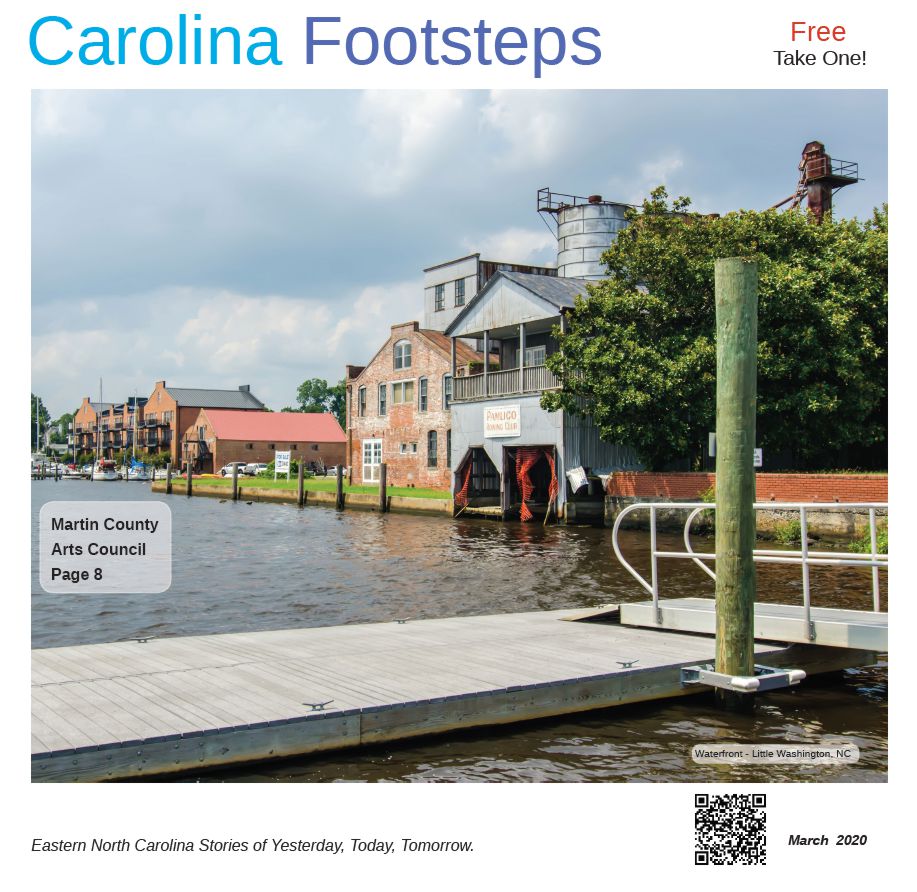The Museum of the Albemarle (MOA) will celebrate its 50th anniversary in May 2017. In last month’s issue we discussed life at the museum in the 1980s. This issue of Albemarle Tradewinds will focus on the 1990s.
Over the years, as the museum’s popularity grew, visitation rose, and the interpretation area expanded to 13 counties. Bertie, Hertford, and Northampton counties were added to the museum’s interpretative area in 1997.
Museum leaders included Barbara Taylor, John Whitley (interim), Charlene Akers, Wesley Creel, Rhonda Tyson, Claire Glasson (interim), and Edward Merrell.
The museum opened over 40 exhibits during this decade including Taste of the Past: Early Foodways of the Albemarle Region, 1585-1830; Columbia Bicentennial 1793-1993: A Visit to Heart’s Delight; The Lost Colony Drama: Applauding 60 Years; Fire and Wind: Disasters of the Albemarle; and Fixing the Farm: The Rural Craftsworker.
Visitors left wonderful comments on their visit including: “It is our hope that the museum enriches their [children’s] lives through enjoyment and learning.” “If we don’t preserved history, what is the youth of tomorrow going to know about today?” “MOA was born to preserve local history.”
In 1989, MOA acquired a rare find, a circa 1755 house. Built along Knobbs Creek about five miles upstream from the Pasquotank River, the Jackson House interprets the lives of Albemarle farmers during the late colonial and early republic years. Though modest by later standards, the house allowed the family to live in a measure of comfort afforded to a very small minority of the region’s population. It is typical of many regional houses that were occupied by successive generations of the same family. The Elizabeth City Historic Neighborhood Association and the Museum of History Associates provided funds to move the house to the museum grounds in 1990. The Jackson-Jennings House Restoration Fund was established in 1992 and the Guild of Museum Friends pledged $25,000 toward the house’s eventual restoration. The Guild presented the final installment of their pledge in February 1999.
MOA contracted building conservator Russ Steele of Currituck County to reassemble the Jackson House beginning in 2004. Today, the house can be found in the main gallery Our Story, interpreting the lives of small and mid-scale farmers from 1755 to 1820. Inside the house are artifacts and some reproduction items such as a circa 1735 corner cupboard, circa 1780 rocking chair, brass candlesticks, crocks, a spinning wheel, and a small wooden crib. Most children who step inside the house find amusement in the indoor “bathroom,” which is simply a pot under the bed. Also be sure and notice important features in the construction of the house including crown molding, flush-sheathed wainscot, corner stair ghost marks, and molded Georgian chair rail.
Pick up next month’s issue of the Albemarle Tradewinds to learn about the museum during the 2000s.
Museum of the Albemarle -- By: Wanda Lassiter, Curator, Museum of the Albemarle
 Reviewed by kensunm
on
7:00:00 PM
Rating:
Reviewed by kensunm
on
7:00:00 PM
Rating:
 Reviewed by kensunm
on
7:00:00 PM
Rating:
Reviewed by kensunm
on
7:00:00 PM
Rating:







No comments: